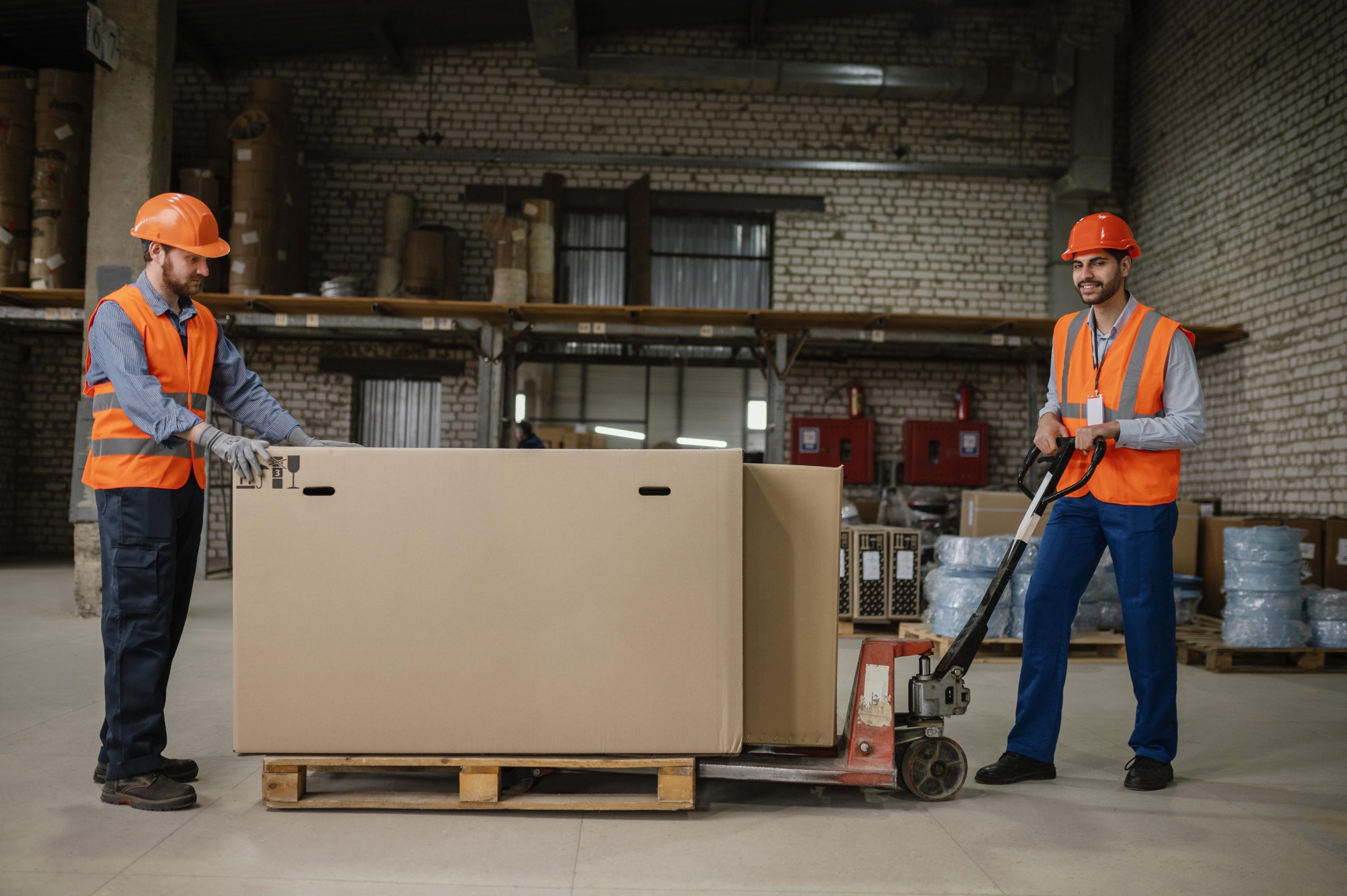Table Of Contents
- Factory Relocation Timelines for Small Businesses: A Detailed Breakdown
- 1. Initial Assessment and Planning (1–3 Months)
- 2. Site Preparation and Lease Negotiations (1–2 Months)
- 3. Equipment Inventory and Logistics Planning (1 Month)
- 4. Physical Move and Setup (1–2 Weeks)
- 5. Post-Move Adjustments and Optimization (1–2 Months)
- Benefits Of Factory Relocation:
- 1. Cost Reduction:
- 2. Access to Skilled Labor and Talent
- 3. Closeness To Key Markets Or Suppliers
- 4. Opportunities Of Modernization And Expansion
- 5. Improved Regulatory And Business Environment:
- 6. More Resilience Of The Supply Chain
- 7. Environmental And Sustainability Benefits
- 8. Increased Productivity And Efficiency
- 9. Strategic Business Growth
- 10. Improved Staff Welfare And Job Satisfaction
- Planning for Success!
Factory Relocation Timelines for Small Businesses: Planning for Success
Relocating a factory is a significant undertaking for any business, but for small businesses, it presents unique challenges that demand careful planning and execution.
Moving a factory can be daunting, whether driven by the need for more space, lower operating costs, or access to better infrastructure. Managing the timeline effectively is one of the most critical components of a successful relocation.
Every stage must be aligned to minimize disruption and downtime from initial planning to final setup. This article explores the key phases of factory relocation for small businesses and offers insights into realistic timeline expectations.
Stay tuned.
Factory Relocation Timelines for Small Businesses: A Detailed Breakdown
So, without wasting time, let’s check out the factory relocation timelines for small businesses:
1. Initial Assessment and Planning (1–3 Months)
The first phase of any factory relocation involves assessing the need for the move and laying out a comprehensive plan.
For small businesses, this often includes evaluating budget constraints, facility requirements, and operational goals. During this stage, business owners typically:
- Analyze the pros and cons of relocation.
- Conduct a site search and select a new location.
- Consult with stakeholders and create a move committee.
At this point, developing a relocation timeline and budget is essential. Depending on the complexity of the move and the availability of properties, this stage can take anywhere from one to three months.
2. Site Preparation and Lease Negotiations (1–2 Months)
Once a location has been selected, the next step is to secure the space through purchase or lease.
Lease negotiations and legal reviews can be time-consuming, particularly for small businesses unfamiliar with commercial property deals.
Simultaneously, the new site may need renovations or retrofitting to meet operational needs. Tasks during this phase include:
- Finalizing legal and financial documents.
- Designing layout and infrastructure changes.
- Coordinating with contractors and utility providers.
Allowing one to two months for this phase ensures enough time to adequately prepare the facility before the move begins.
3. Equipment Inventory and Logistics Planning (1 Month)
An accurate inventory of existing equipment and materials is essential to avoid lost assets or unnecessary transportation costs.
Small businesses often lack the internal resources to manage this alone, making it vital to enlist external support.
Partnering with professionals specializing in industrial rigging services can ensure that heavy machinery and delicate equipment are moved safely and efficiently. This phase involves:
- Categorizing equipment by size, sensitivity, and installation needs.
- Labeling and documenting all assets.
- Creating a move sequence and transportation schedule.
This step typically takes a month but can overlap with site preparation to save time.
4. Physical Move and Setup (1–2 Weeks)
The relocation—moving equipment, furniture, inventory, and staff—must be executed precisely. Minimizing downtime is critical for small businesses to maintain revenue streams and customer relationships.
A well-organized move can be completed in one to two weeks, depending on the size and complexity of the operation. Key tasks include:
- Dismantling, transporting, and reinstalling equipment.
- Testing systems and machinery for functionality.
- Ensuring employee workspaces are operational.
Using experienced movers and rigging specialists reduces the risk of delays or damage during this high-pressure phase.
5. Post-Move Adjustments and Optimization (1–2 Months)
Work is still to be done even after the physical move is complete. Small businesses must reestablish routines, optimize new space workflows, and address technical or logistical issues. During this time, companies should:
- Train staff in new layouts or systems.
- Finalize permit and licensing updates.
- Reconnect with vendors and customers to communicate changes.
Allowing one to two months for this final stage ensures the business is fully stabilized and operates efficiently in its new location.
Benefits Of Factory Relocation:
Factory relocation, plant relocation, or industrial relocation may be described as relocating manufacturing activities from one location to another.
Though it’s a daunting task with ample planning and endeavor, corporate groups generally see pluses over minuses.
Whether the motive is operational, strategic, or economic, factory relocations can potentially bring long-term growth, cost savings, and improved efficiency.
1. Cost Reduction:
One of the strongest motives for the relocation of factories is that it provides significant cost reductions.
• Lower Labor Costs
Shifting to places or countries with lower labor cost makes companies reduce operational expenses immensely without being any less effective.
• Reduced Overhead
Shifting operations to a place with lower utility, rent, and taxation can reduce monthly overhead costs. For instance, shifting from an industrial zone within the city to the suburbs or the outskirts of a city can reduce property-based costs.
• Tax Savings
Some national or regional governments offer tax allowances, grants, or subsidies to producers as an incentive. Relocating there could raise the question of immediate economic advantage.
2. Access to Skilled Labor and Talent
Factory relocation can bring the business to a more suitable fit in workforce terms.
• Better Availability of the Workforce
There are some zones that possess a larger or more dedicated labor force in the specialty niche of some manufacturing sectors such as electronics, textiles, or automobiles.
• Customized Training Programs
There can be in-factory training development programs that offer more skilled laborers in new buildings.
3. Closeness To Key Markets Or Suppliers
Close is in the nature of effective supply chains.
• Reduced Shipping Charges and Transit Time
Reducing the distance to the large customers or distribution centers can reduce shipping costs and delivery time, leading to greater customer satisfaction.
• Synergy of Suppliers
Factories in close proximity to raw material suppliers or component producers also experience reduced cost purchasing and lead times.
4. Opportunities Of Modernization And Expansion
Factory relocation offers opportunities for modernizing facilities and the use of more efficient production systems.
• Improved Infrastructure
Relocation to a new or specific facility could enhance capacity, energy efficiency, and compliance with safety regulations.
• Technology Integration
New geographies could be more suitable for deploying Industry 4.0 technologies such as automation, robotics, IoT, and smart manufacturing systems.
5. Improved Regulatory And Business Environment:
Relocating the business to a location with a better regulatory environment could be strategically valuable.
• Simplified Permitting and Compliance
New markets with more favorable business policies can offer streamlined permitting procedures and fewer uncertain requirements for conformity, reducing bureaucratic burdens.
• Political and Economic Stability
Relocating to an area with political and economic stability reduces risk and enhances the ability for long-term planning.
6. More Resilience Of The Supply Chain
The global COVID-19 pandemic has thereby placed supply chain resilience development in the spotlight.
• Diversification of Operations
Relocating a factory site to a new area can diversify manufacturing facilities and minimize dependence on one site, subjecting it to the influence of natural catastrophes or political turmoil.
• Nearshoring or Reshoring
Nearness adjustments can minimize dependence on international shipping, especially with international supply chain disruptions or tariffs.
7. Environmental And Sustainability Benefits
Factory relocation can aid an organization in meeting its environmental, social, and governance (ESG) goals.
• Greener Facilities
Greener processes like energy-efficient machines, solar power, and recycling units are more likely to be found in new factories.
• Improved Environmental Compliance
Relocation to an area with strong environmental protection may force good business reforms, making the company follow international standards for sustainability.
8. Increased Productivity And Efficiency
Relocation presents an opportunity to re-engineer the operations and simplify processes.
• Lean Layout Designs
The facility can be constructed with minimized layout complexities for better workflow, better material flow, and less downtime.
• Consolidation of Operations
Where a business is situated in multiple older buildings, moving can allow for concentration of the lines of production into a single building to prevent duplication and facilitate communication.
9. Strategic Business Growth
Factory relocation adapts to generic business expansion schemes.
• Access to New Markets
Centralizing operations closer to emerging markets has the chance to create new business prospects, increase competitiveness, and establish branding.
• Joint Ventures and Partnerships
Being situated inside an industrial area or economic estate, there is a possible avenue of strategic co-operation and coordination among neighboring firms.
10. Improved Staff Welfare And Job Satisfaction
Relocation to a more secure or better-equipped plant can influence the employees directly.
• Improved Workplace Conditions
Factories today can be ventilated, lighted, cleaned, and secured better, which is comparable to workers’ welfare.
• Improved Work-Life Balance
Relocation to an area with reduced traveling distance, cheap houses, and better amenities can render workers happier and less susceptible to turnover.
Planning for Success!
For small businesses, factory relocation is more than a logistical hurdle—it’s a strategic move that can define the company’s future.
Business owners can reduce stress, control costs, and ensure a smooth transition by breaking the process into manageable phases and allowing sufficient time for each.
Factoring in the expertise of professionals can further streamline the timeline and safeguard valuable assets. With thoughtful planning and execution, small businesses can turn a complex relocation into a powerful step forward.
Read Also:
- Mywebinsurance.com Business Insurance: Learn To Protect Your Business with Tailored Insurance Solutions
- How Badge Accessories Enhance Business Security and Efficiency
- The Hidden Cost of Retail Crime: More Than Meets the Eye














